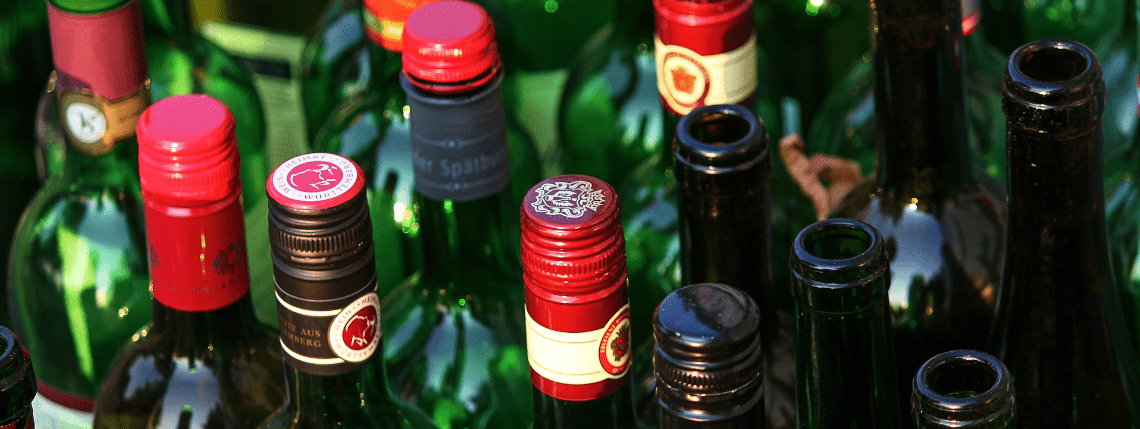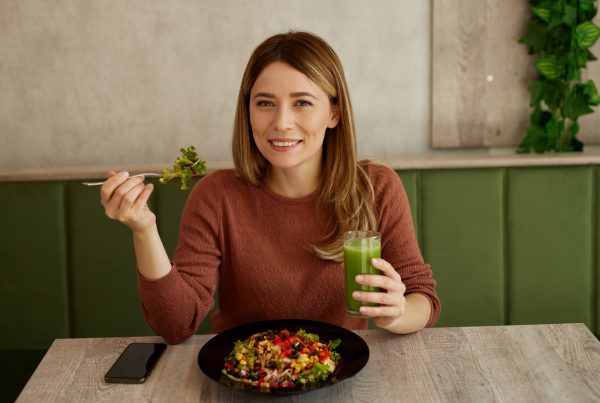Dietitian Dr Linia Patel ponders the question many of us don’t really want to ask: should I give up alcohol?
Something to celebrate? Pour a little prosecco. Crappy Zoom-meeting filled day? The after-work gin and tonic will soften the edges a little bit. Tired of living in lockdown for another week? Have a beer to mark the end of the week. Before long, without too much effort, the alcohol adds up. Is that a problem? Can alcohol stand in the way of your health and fitness goals? Would quitting alcohol mean a slimmer waistline and a reduced risk of cancer? Or wait, isn’t alcohol good for your heart?
Have you heard that drinking wine is good for you?
The biggest benefits of alcohol are seen in cardiovascular health. Light to moderate drinking is linked to a reduced risk of cardiovascular disease, while heavy drinking appears to increase the risk. The possible reasons for the beneficial effects include an increase in your HDL (good cholesterol), a decrease in blood pressure and also a lower concentration of substances that contribute to blood clots1. The benefits of moderate alcohol consumption are particularly observed in middle age, when heart disease begins to account for an increasingly large share of disease and deaths2. The benefits of moderate drinking do extend beyond the heart. The social and psychological benefits of alcohol also can’t be ignored. The occasional drink can be a real tonic3.
Ultimately, the research shows that what you drink (beer or wine, diet mixer or not) matters less than how much you drink or how you drink. Having seven drinks on a Friday night and then not drinking for the rest of the week isn’t the same as having one drink a day. Although the weekly total may be the same, the health implications are not3,4.
What’s the problem with too much alcohol?
Alcohol is both a tonic and a poison. The research seems to suggest that the difference lies mostly in the dose3. Heavy drinking is bad for health. We know this. Perhaps less known is the link to certain cancers. One study, for example, showed that breast cancer risk increased by 6% for each 10g (slightly more than a unit of alcohol) of alcohol drunk. Alcohol blocks the absorption of folate and it is thought that this interaction may be how alcohol increases the risk of breast, colon and other cancers. Experts believe that adequate daily intake of folate of at least 600micrograms reduces this risk5,6.
Even a couple of drinks can affect the quality of your sleep. This is because alcohol interferes with the rapid eye movement (REM) and deep sleep phases of your sleep cycle. Your body restores itself in deep sleep; however, alcohol encourages your body to come out of deep sleep into REM sleep, which is easier to wake from7.
Research shows that alcohol also affects your appetite. One study showed a 20% increase in calories consumed at a meal when alcohol was consumed before the meal. There was a total caloric increase of 33% when the calories from the alcohol were added. Alcohol also increases the production of ghrelin, a hunger hormone that stimulates appetite, particularly for high-fat foods. Stimulating your appetite and being high in calories is a recipe for disaster if you are trying to manage your weight8. Coupled with research suggesting it has a negative impact on protein synthesis, perhaps it isn’t the best thing if you’re looking to tone up or build up with muscle9.
What is moderation anyway?
Alcoholic drinks come in different strengths and sizes – hence recommendations for alcohol intakes are usually based on the number of units. In the UK, one alcohol unit is measured as 10ml or 8g of pure alcohol. So below are examples of how many units some of the most commonly drunk drinks are:
- one 25ml measure of a standard spirit (ABV 40%) = 1 unit
- one 33oml of lager/beer/cider (ABV 5%) = 1.7 units
- 125ml of wine (ABV 12%) = 1.5 units
UK guidelines recommend that men and women drink no more than 14 units a week on a regular basis. If you regularly drink as much as 14 units per week, advice is that you spread your drinking over three or more days and include some alcohol-free days in the week. Consuming more than this weekly recommended limit is considered ‘at risk’ or ‘heavy’ drinking. Guidelines for alcohol intake are different for certain groups of the population, including women who are pregnant or trying to become pregnant, breastfeeding women and people with diabetes10.
To drink or not to drink?
No one would deny the enjoyment of the odd glass of wine or a cold beer. The evidence shows some benefits of light to moderate drinking but it also clearly shows some risks. Currently, it is not possible to precisely assess the ratio of risk to benefit for each individual, as this will depend on many factors such as their age, their lifestyle and, of course, their genetics. If you do drink, it’s all about moderation.
Sensible drinking
- If you don’t drink – there is no need to start.
- If you do drink, enjoy whatever drink you like but keep within the recommended amounts.
- Consider taking a multivitamin with folic acid if you drink regularly and have other risk factors for heart disease or colon and breast cancer.
- Keep water available to quench your thirst while you drink alcoholic beverages. Alternate alcohol with water or non-alcoholic drinks.
Want some tips on how to cut out alcohol? read out blog, 10 tools for a successful Dry January
Author bio

Dr Linia Patel has a BSc degree in biochemistry and physiology and has recently achieved a PhD in public health. Linia is a leading dietitian and sports nutritionist. Her passion is translating nutritional science into easy-to-digest and practical advice. @liniapatelnutiriton
References
- Holmes M et al (2014), Association between alcohol and cardiovascular disease: Mendelian randomisation analysis based on individual participant data, BMJ,
- Britton A et al (2016), Underestimating the alcohol content of a glass of wine: the implications for estimates of mortality risk, Alcohol, 51(5): 609-14.
- Balancing the risks and benefits. Nutrition Source. Harvard. [Online] https://www.hsph.harvard.edu/nutritionsource/alcohol-full-story/, accessed on 21 January 2021.
- Cao Y et al (2015), Light to moderate intake of alcohol, drinking patterns, and risk of cancer: results from two prospective US cohort studies, BMJ,
- Bagnardi V et al (2015), Alcohol consumption and site-specific cancer risk: a comprehensive dose- response meta-analysis, British Journal of Cancer, 112: 580-593.
- Baglietto L et al (2005), Does dietary folate intake modify effect of alcohol consumption on breast cancer risk? Prospective cohort study, BMJ, 331:807.
- Van Reen et al (2016), Current alcohol use is associated with sleep patterns in first year college students, Sleep, 39(6): 1,321-6.
- Gee C (2006), Does alcohol stimulate appetite and energy intake, Br J Community Nurse, 11(7): 298-302.
- Kimball et al (2018), Mechanisms underlying muscle protein imbalance induced by alcohol, Annu Rev Nutr., 21(38): 197-217.
- Drink aware. [Online]. https://www.drinkaware.co.uk/alcohol-facts/alcohol-and-the-law/drink-driving-and-the-legal-alcohol-limit/, accessed on 21 January 2021.







